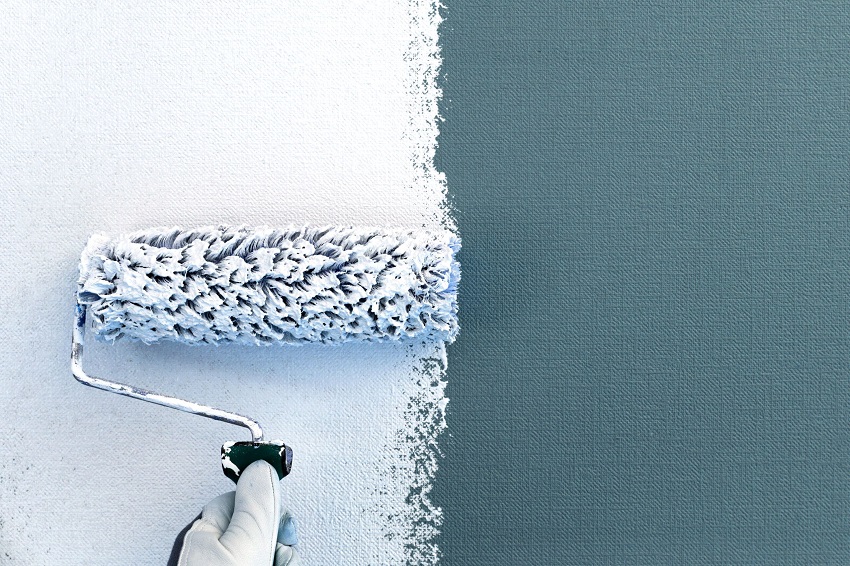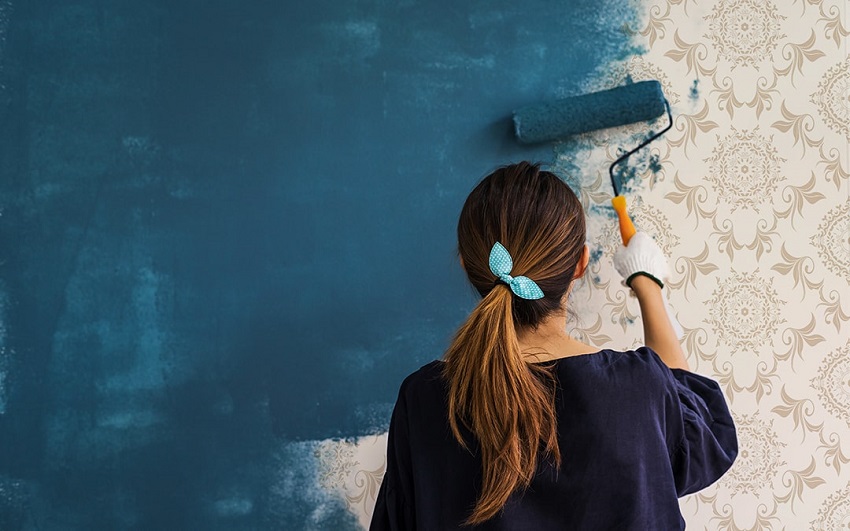If you’re looking to spruce up your walls and give your home a fresh new look, wallpaper can be a fantastic option. However, if you already have painted walls, you might be wondering whether it’s possible to wallpaper over paint. In this article, we’ll dive into this topic and explore the dos and don’ts of wallpapering over paint, including tips, examples, and brands that offer reliable options. The article is contributed by https://checkyourhud.com/
Can You Wallpaper Over Paint?
The good news is that, in most cases, you can indeed wallpaper over paint. However, there are some important factors to consider before you proceed. Firstly, you need to ensure that the existing painted surface is clean, smooth, and in good condition. Any cracks, peeling paint, or imperfections could impact the final result of your wallpaper application.
Preparing the Painted Surface
Before you start wallpapering, it’s crucial to prepare the painted surface properly. Follow these steps to ensure the best results:
1. Clean the Walls
When preparing to wallpaper a wall, it’s important to start with a clean surface. Begin by using a mild detergent and warm water to clean the walls thoroughly. Remove any dirt, grease, or dust from the painted surface. Let the walls dry completely before moving on to the next step. Once you’ve done that, you can discover how to put wallpaper on wall with ease!
2. Sanding
Gently sand the painted surface to create a slightly rough texture. This helps the wallpaper adhesive to adhere better to the walls. After sanding, wipe away any dust with a clean cloth.
3. Primer
Applying a primer is highly recommended, especially if the existing paint has a glossy or satin finish. A good quality primer will create a more adhesive-friendly surface and increase the longevity of your wallpaper.
Choosing the Right Wallpaper
When wallpapering over paint, selecting the appropriate wallpaper is essential for a successful application. Here are some popular options:
1. Peel-and-Stick Wallpaper
Peel-and-stick wallpapers have become increasingly popular due to their ease of use. They come with an adhesive backing, eliminating the need for additional glue. Brands like Tempaper and RoomMates offer a wide range of peel-and-stick designs, making them an excellent choice for DIY enthusiasts.
2. Pre-Pasted Wallpaper
Pre-pasted wallpapers come with a dry adhesive on the back, which is activated by soaking the wallpaper in water. They are relatively easy to work with, but it’s crucial to follow the manufacturer’s instructions for the best results. York Wallcoverings and Brewster Home Fashions are renowned brands for pre-pasted wallpapers.
3. Traditional Wallpaper
Traditional wallpapers require the use of wallpaper paste or adhesive. They offer a vast selection of designs, textures, and materials, allowing you to find the perfect fit for your home. Farrow & Ball and Graham & Brown are popular brands known for their high-quality traditional wallpapers.
Wallpapering Process
Now that you’ve prepared the surface and chosen your desired wallpaper, it’s time to start the wallpapering process:
1. Measure and Cut
Measure the height of your walls and cut the wallpaper accordingly. Remember to leave a few inches of extra paper at the top and bottom to accommodate any adjustments.
2. Apply Adhesive
If you’re using traditional wallpaper, follow the manufacturer’s instructions to mix the adhesive. Apply the adhesive evenly to the back of the wallpaper using a roller or brush.
3. Hang the Wallpaper
Carefully hang the wallpaper, starting from the top and working your way down. Smooth out any bubbles or wrinkles as you go. For peel-and-stick or pre-pasted wallpapers, follow the specific instructions provided by the manufacturer.
4. Trim the Edges
Once the wallpaper is in place, use a sharp utility knife to trim the excess paper from the edges and around outlets and switches.
FAQs
- Can I wallpaper over textured paint?
Wallpapering over textured paint can be more challenging, as the texture might show through the paper. It’s best to sand down the texture or apply a new layer of smooth paint before wallpapering.
- Can I remove the wallpaper later if needed?
Yes, most wallpapers, especially peel-and-stick and pre-pasted varieties, are designed to be removable without causing damage to the walls.
- How do I clean wallpaper?
Cleaning methods depend on the type of wallpaper. For most wallpapers, a gentle wipe with a damp cloth should be sufficient. However, always check the manufacturer’s instructions to ensure proper care.
- Can I wallpaper over wallpaper?
It’s generally not recommended to wallpaper over existing wallpaper, as it can lead to an uneven surface and reduced adhesion.
- How long does wallpaper last?
The lifespan of wallpaper depends on various factors, including the quality of installation and the type of wallpaper. With proper care, wallpaper can last for several years.
Conclusion
Wallpapering over paint can be a fantastic way to update your living spaces without going through the hassle of repainting. By properly preparing the painted surface and selecting the right wallpaper, you can achieve a beautiful and long-lasting result. Whether you opt for peel-and-stick, pre-pasted, or traditional wallpaper, following the guidelines and tips provided in this article will help ensure a successful wallpaper application.

